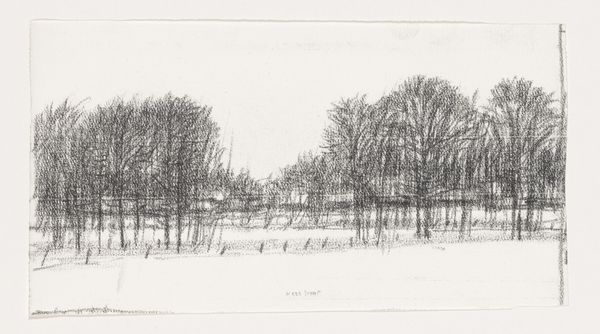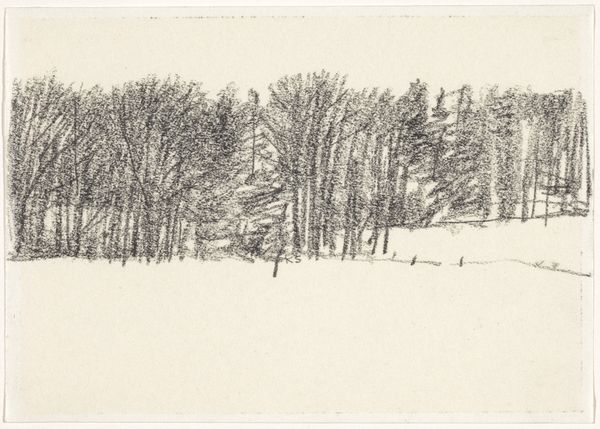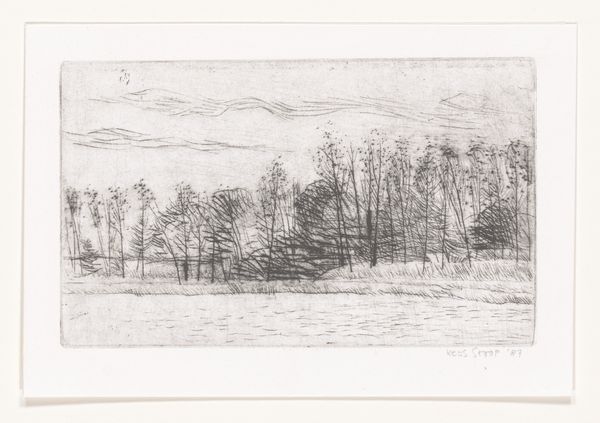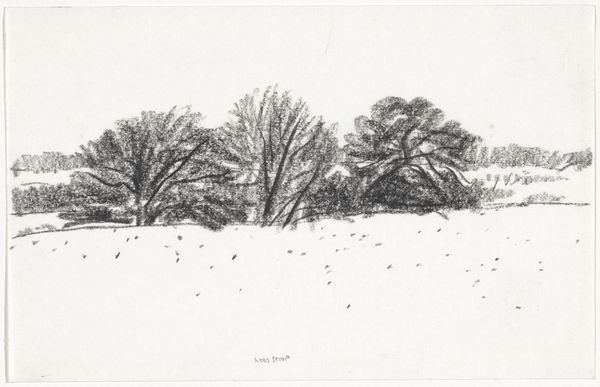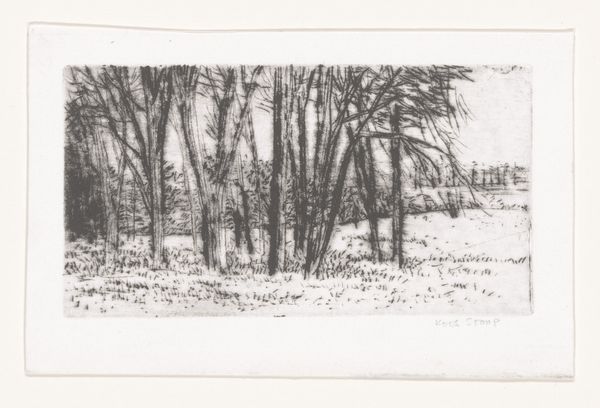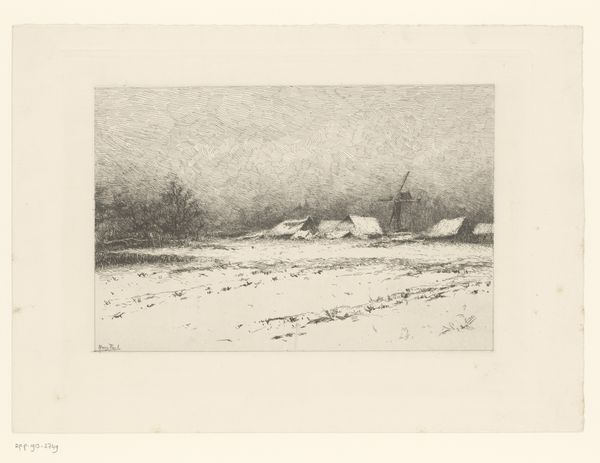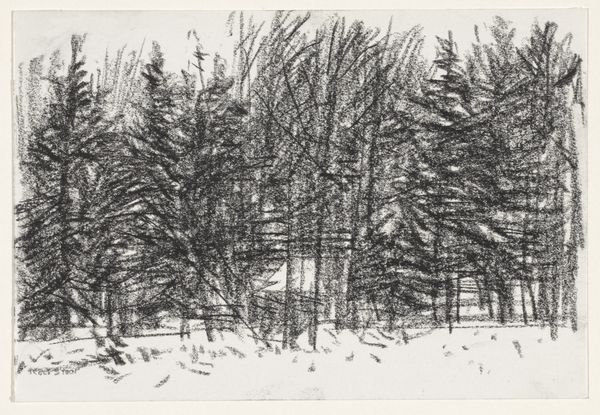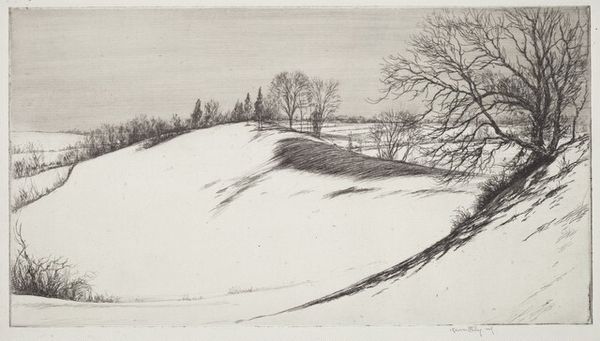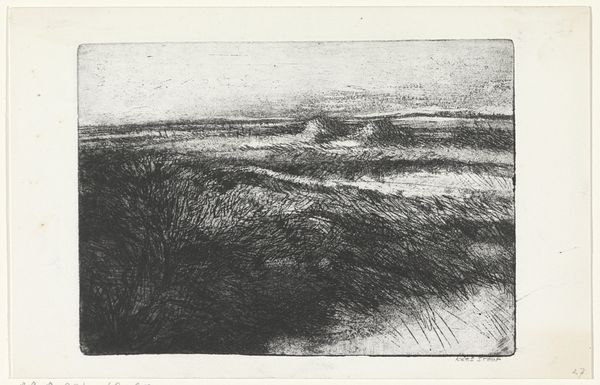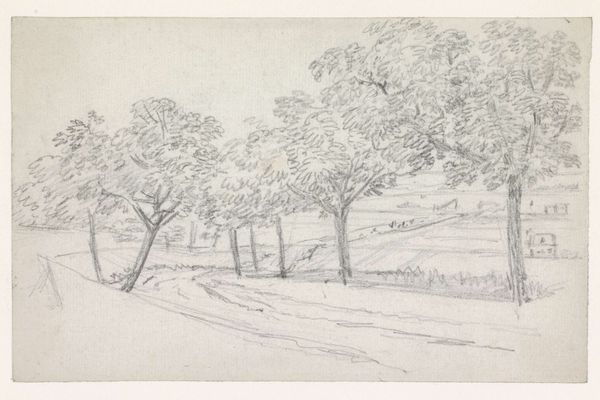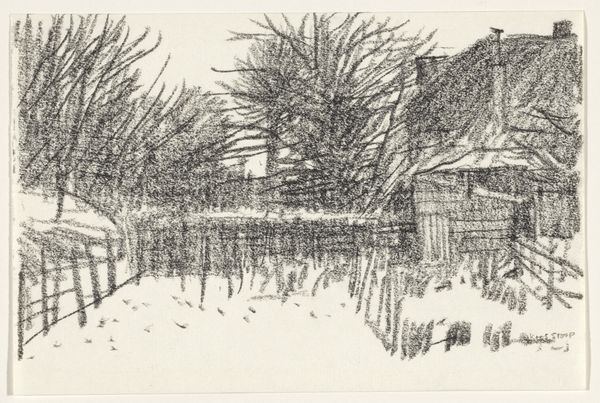
drawing, pencil
#
landscape illustration sketch
#
drawing
#
thin stroke sketch
#
pen illustration
#
pen sketch
#
incomplete sketchy
#
landscape
#
ink line art
#
linework heavy
#
pen-ink sketch
#
pencil
#
fantasy sketch
#
realism
#
initial sketch
#
monochrome
Dimensions: height 130 mm, width 204 mm
Copyright: Rijks Museum: Open Domain
Editor: Here we have Kees Stoop's "Weiland met bomenrij," created sometime between 1939 and 2009, a drawing using pencil and ink. It's a simple landscape, but there's a certain bleakness to it, almost a sense of abandonment. How do you interpret this work, especially considering the time frame it was created? Curator: Given the artwork's period straddling the mid to late 20th century, a period defined by war, reconstruction, and shifting social paradigms, the "bleakness" you perceive may well be intentional. It is critical to remember the sociopolitical climate. This period saw the rise of new cultural institutions alongside deep interrogation of historical power dynamics. What choices, conscious or unconscious, do you think the artist was making? Editor: Well, the sketch-like quality makes me think this wasn't necessarily intended for public display, and, also the bleakness in it reminds me of the reconstruction era... But what would be the purpose of drawing it? Was this something personal? Or to show and criticize the impacts of the social contexts? Curator: Precisely. Consider how Stoop navigates the complex, and sometimes conflicting, demands of public art and private expression. Was Stoop intentionally critiquing idealized landscapes so common before World War II? The monochrome palette and rudimentary linework seem to move away from traditional aesthetics and more towards a raw interpretation. What societal anxieties do you think are visualized within this “raw interpretation?” Editor: I didn't really catch that. Maybe the fast economic changes? Also the landscape does appear pretty damaged... like a battlefield, and those are usually devastating. Curator: Absolutely. Artists don’t exist in a vacuum; Stoop’s response mirrors the anxieties of rapid urbanization and industrialization which defined post-war Netherlands. Art serves as both a reflection of society and an active agent in shaping its understanding. It’s really powerful to realize art acts as commentary and engagement to society, thank you! Editor: Yes! It definitely gives me a better appreciation for how connected art is to larger social changes. Thanks for your thoughts!
Comments
No comments
Be the first to comment and join the conversation on the ultimate creative platform.
